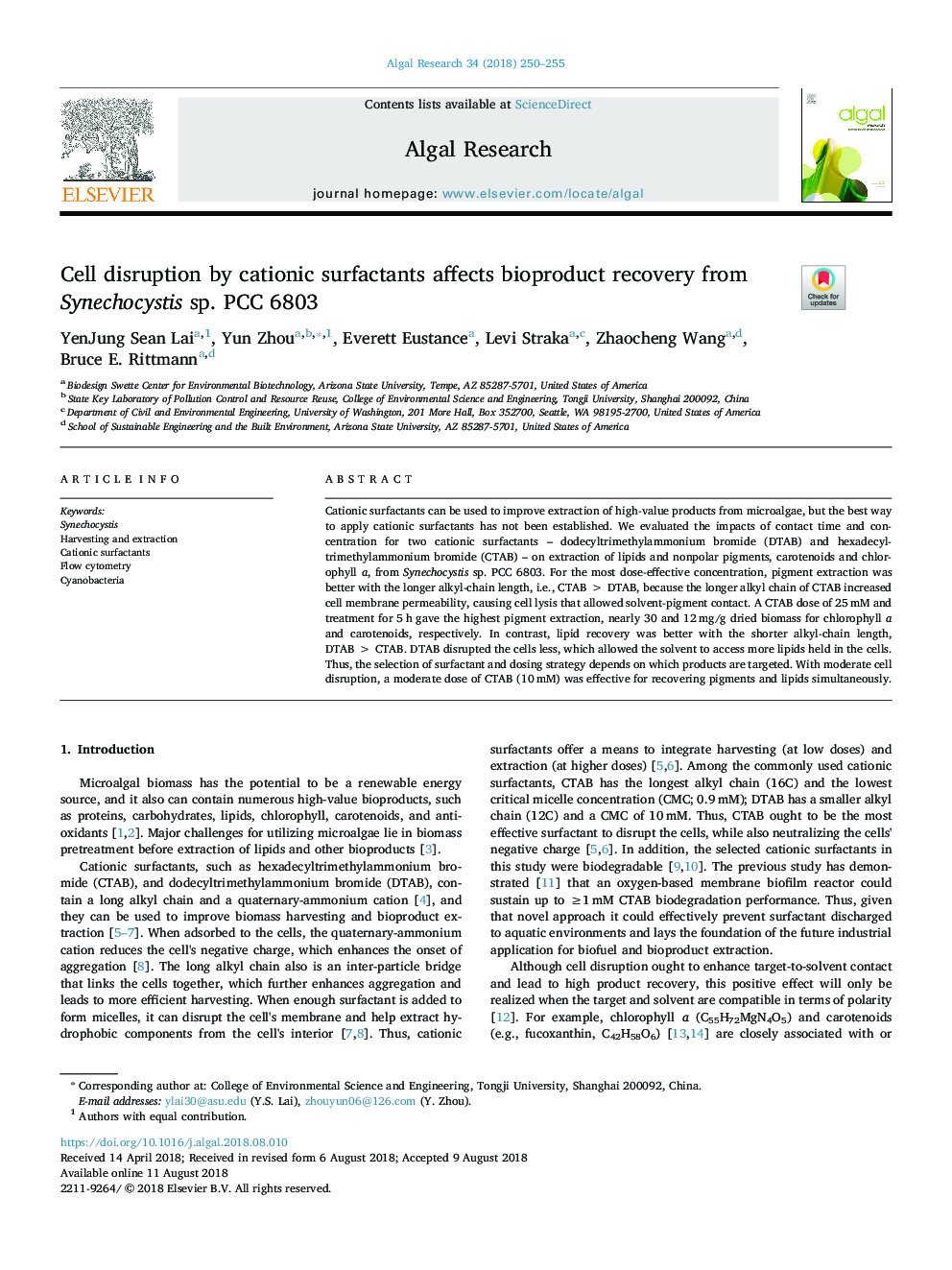| Article ID | Journal | Published Year | Pages | File Type |
|---|---|---|---|---|
| 8085680 | Algal Research | 2018 | 6 Pages |
Abstract
Cationic surfactants can be used to improve extraction of high-value products from microalgae, but the best way to apply cationic surfactants has not been established. We evaluated the impacts of contact time and concentration for two cationic surfactants - dodecyltrimethylammonium bromide (DTAB) and hexadecyltrimethylammonium bromide (CTAB) - on extraction of lipids and nonpolar pigments, carotenoids and chlorophyll a, from Synechocystis sp. PCC 6803. For the most dose-effective concentration, pigment extraction was better with the longer alkyl-chain length, i.e., CTABâ¯>â¯DTAB, because the longer alkyl chain of CTAB increased cell membrane permeability, causing cell lysis that allowed solvent-pigment contact. A CTAB dose of 25â¯mM and treatment for 5â¯h gave the highest pigment extraction, nearly 30 and 12â¯mg/g dried biomass for chlorophyll a and carotenoids, respectively. In contrast, lipid recovery was better with the shorter alkyl-chain length, DTABâ¯>â¯CTAB. DTAB disrupted the cells less, which allowed the solvent to access more lipids held in the cells. Thus, the selection of surfactant and dosing strategy depends on which products are targeted. With moderate cell disruption, a moderate dose of CTAB (10â¯mM) was effective for recovering pigments and lipids simultaneously.
Related Topics
Physical Sciences and Engineering
Energy
Renewable Energy, Sustainability and the Environment
Authors
YenJung Sean Lai, Yun Zhou, Everett Eustance, Levi Straka, Zhaocheng Wang, Bruce E. Rittmann,
